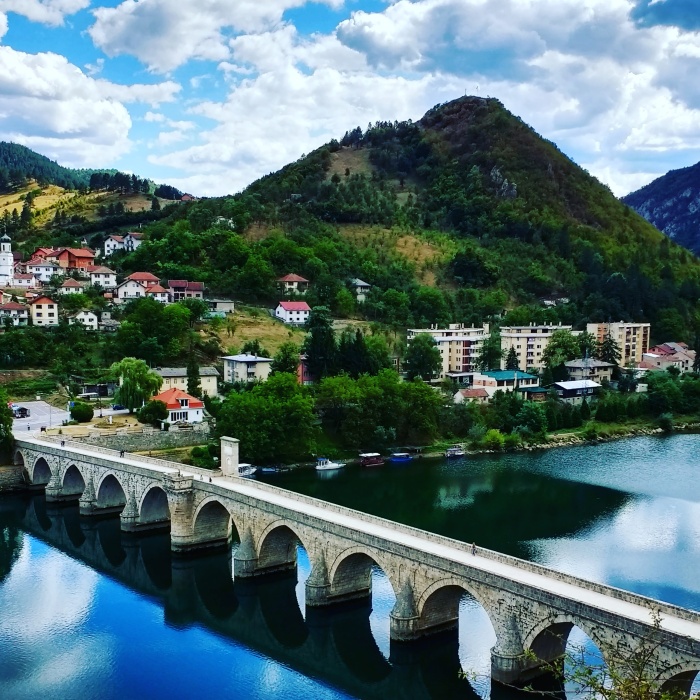
The countryside of Serbia is truly extraordinary. After experiencing Belgrade, I decided to spend a week in the southern Serbian mountain town of Zlatibor. At around a kilometre above sea level, it has a cooler climate and made a welcome change to the melting Satan-hot summer temperatures of Belgrade. It has been said that Zlatibor has some of the cleanest air in all of Europe. Zlatibor is a resort town and is a very popular skiing destination for Serbians in winter. For a week I had my own mini studio-cube apartment at the top level of a warm family home on the outskirts of town.
Zlatibor is also a launchpad from which to visit the region’s surrounding areas of which there are many gems. However without your own vehicle it can be challenging to visit these places. Fortunately I met a very interesting and knowledgeable young man named Bogdan who has his own small tour business. It was already the beginning of September when I arrived in Zlatibor and by then much of the peak August crowds had left meaning the town wasn’t over crowded and finding/extending accommodation was never a problem.
Mokra Gora
One day I embarked on a day tour with Bogdan and a small group of Serbian tourists to the nearby region of Mokra Gora close to the Bosnian border. Mokra Gora is an authentic and traditional slice of the Balkan country with some magnificent vistas. For the first leg of our Mokra Gora excursion, Bogdan drove us from Zlatibor to Mokra Gora railway station, from where we would travel on an old school train on the short but memorable Sargon Eight narrow-gauge railway line. This line was originally built in 1921 just after the First World War. It took four years to build and is over 15km long. The construction of the line was increasingly gruelling and often life threatening. 3,000 – 5,000 workers were involved in its construction and 200 died. As well as laying down the track, 22 tunnels and 5 bridges were built to make way for the line. The longest tunnel has a length of 1669 metres.
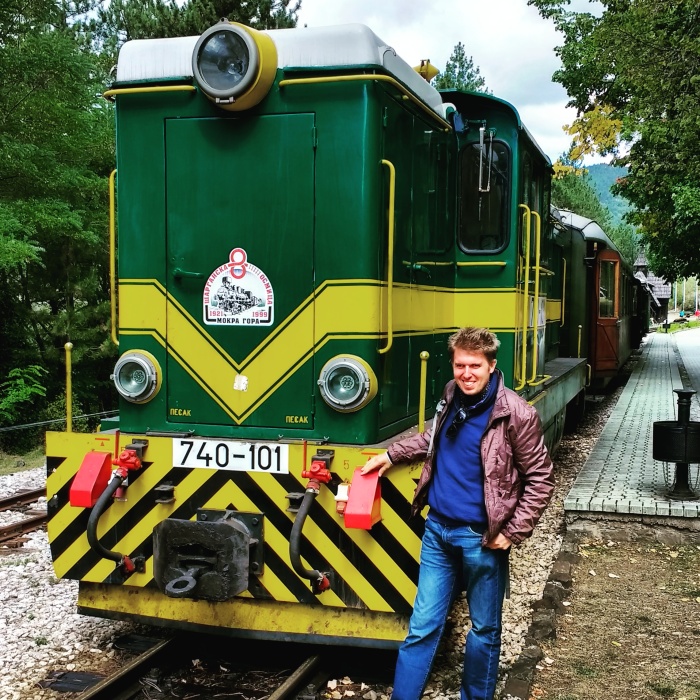
By the Ćira train on the Sargon Eight narrow-gauge railway line
Rather tragically, not long after the railway line was completed, it became abandoned and defunct. It was only in 1999 when it re-opened as a tourist attraction. The classic and vintage narrow gauge train is known as the “Ćira” train. Being on this train brings back happy childhood memories of riding the famous Bluebell Railway train in East Sussex. The spirit of Thomas the Tank Engine throbs. All that is missing is Ringo Starr. I can imagine him being the conductor of that train in another life, taking ample swigs from a cheap bottle of plum rakija in the colder winter months whilst entertaining passengers with off-beat anecdotes via the tannoy.

Mokra Gora
The landscape and views throughout the train journey are sublime. It is a true joy to ride on this train and simple stare and marvel at the fertile green mountain scenery. All that hard graft to build the railway line was not all in vain. The first station we stop at is called the Ninth Kilometre. It is so-called since there are nine kilometres between the station and the Bosnian border. Then we stop at Jatare Station. Here I take a short hike up a small rocky hill with a young Serbian couple from Belgrade for some lovely vistas. Jatare used to be a water station and resting place and is also known by the fact that not one ticket was ever sold at the station.
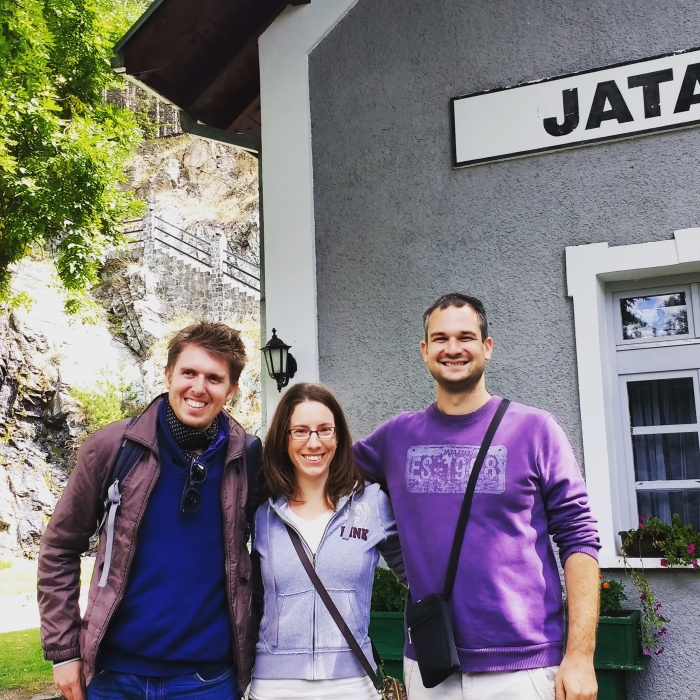
In Jatare with some Serbian friends
We make a few more stops to admire the country scenery before returning to Mokra Gora station where we are reunited with Bogdan. From here we travel to a nearby small village called Bela Voda, which is well known for its natural spring with healing water. The water is known to cure and treat skin diseases. What is also unique about the water here is it is highly alkaline with a pH of 11.5 and is ranked as 5th in the world in terms of its pH level. In addition to treating skin diseases, the water can be drunk in small doses and can cure stomach ulcers and gastritis. It is good for digestion and is also known as ‘eye water’ since it can treat eyelid inflammation.

Bela Voda
Bela Voda is a paradise of a place with an attractive cherry-red stone church by the water stream, which augments the beauty and etherealness of this special village. I fill my empty bottle with some of this water from the well. Nearby there are wooden huts that are available to rent. I think to myself how delightful it would be to spend a long summer here completely forgetting any notions of time and space.

Drvengrad
From Bela Voda, Bogdan drives us to a hillside village not far from Mokra Gora railway station called Drvengrad. This completely wooden village was built by the Serbian filmmaker Emir Kusturica for his 2004 film Life Is A Miracle. It’s a unique, brilliant and unusual place with small streets and squares named after famous filmmakers, writers, visionaries, revolutionaries, sports-stars etc. I’ve written a separate article on the wonders of this magical place in another article which can be viewed here.
Višegrad
Early in the morning the next day, I meet up again with Bogdan for another tour this time visiting the historical Bosnian town of Višegrad. Višegrad is famous for its landmark Ottoman-era Mehmed Paša Sokolović Bridge, which is a UNESCO world heritage site and was the bridge immortalised in the Nobel prize winning writer Ivo Andrić’s novel The Bridge On The Drina. It is also the site of another village complex built by Kusturica called Andrićgrad after Ivo. Unlike Drvengrad, this village is completely made from stone and there is a statue of Andrić.

Dobrun monastery
Before crossing the Bosnian border, we make a stop at the old monastery of Dobrun, which was constructed in 1343 by Duke Pribil and his sons Stefan and Peter. Originally all of the interior of the monastery was decorated with frescoes. Today, just a fraction of those original frescoes survive. Fortunately the one of Tsar Dušan with his wife Jelena and their son Uros still remains. Tsar Dušan, who was also known as Dušan the Mighty (born in 1308 – died on 20 December 1355), was the King of Serbia from 8 September 1331 and the Emperor of the Serbs and Greeks from 16th April 1346 until his death in 1355. This was the golden age of Serbia and at the time of his death, the Serbian Empire included most of modern day Greece, Albania and large swathes of former Yugoslavia.

14th century fresco of Tsar Dušan with his wife Jelena and their son Uros inside the monastery
Unfortunately since the era of Tsar Dušan, the monastery was under attack on several occasions. The first attack came in 1393 when the Ottoman Turks occupied Bosnia. Yet it faced the greatest destruction during the Second World War when it was used by the Germans to store ammunition. On their withdrawal in 1945 at the end of the war, they blew up the monastery. It was restored the following year. In spite of the monastery’s turbulent history, it is a handsome and immaculate building in beautiful surroundings. The decoration of the front facade of the monastery is a work of art.
Afterwards we cross the border and head to Višegrad. In 1454 Višegrad was conquered by the Ottoman Empire headed by Osman Pasha. The town remained under the empire for over four centuries until 1878 when the Austro-Hungarian Empire controlled Bosnia and Herzegovina. More recently, the town suffered greatly during the Bosnian War from 1992-5. Much of the town was bombarded by JNA (Yugoslavian National Army) troops and many houses were destroyed and an estimated 3,000 Bosniaks were killed.

The landmark Ottoman-era Mehmed Paša Sokolović Bridge in Višegrad
Most of the arches of the famous bridge were badly damaged (and some even completely destroyed) during both world wars. The bridge was also the scene for the killing of hundreds of Bosniaks by Bosnian Serb forces during the Bosnian War.
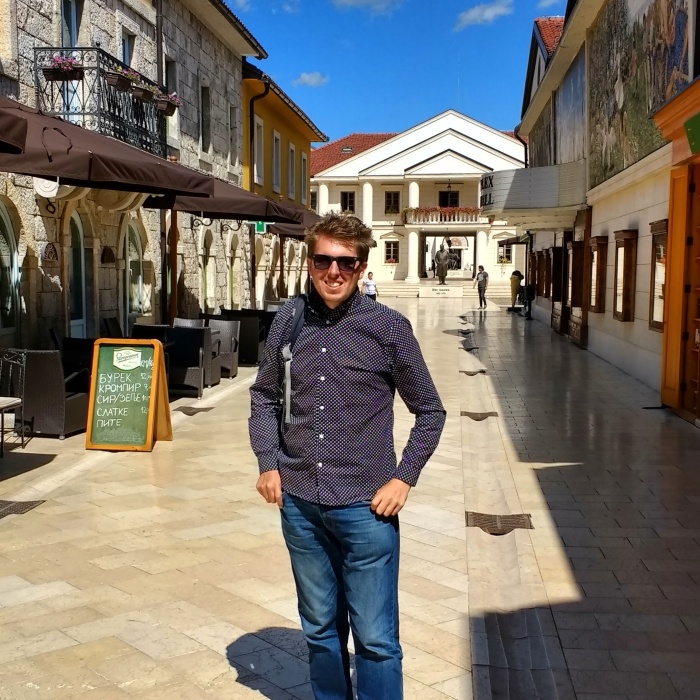
In Andrićgrad
Filmmaker Emir Kusturica’s nearby village complex, Andrićgrad (also referred to as Kamengrad or ‘Stonetown’), officially opened on 28th June 2014 to mark the 100th year anniversary of the assassination of Archduke Franz Ferdinand by the young Bosnian revolutionary, Gavrilo Princip. When you enter the complex and walk along the Main Street with cafes, you may notice two large rectangular mosaic murals by the Multiplex Dolly Bell cinema. The first one features Gavrilo Princip with other members of the Young Bosnian movement who wanted to end Austrian-Hungarian rule in Bosnia by assassinating the Archduke. This led to the start of the First World War. In the other mural a group of men featuring Kusturica appear to be engaged in a ‘tug of war’. In a way this mural is a homage to the perseverance and resilience in realising Kusturica’s vision of Andrićgrad. Looking at the mural more closely, you may notice the Serbian tennis star Novak Djokovic in the background.

Mural of Gavrilo Princip and members of the Young Bosnian movement

Mural of Kusturica (with Milorad Dodik, president of the Republika Srpska) and Novak Djokovic in the background
The town’s style is a mix of Ottoman, Byzantine, Renaissance and Classical periods of architecture which reflect the history of Višegrad. There are statues of Ivo Andric, scientist and visionary Nikola Tesla and Petar II Petrović-Njegoš, who was a Prince-Bishop of Montenegro as well as an important poet and philosopher who’s works are seen as some of the most significant in Montenegrin and Serbian literature. In addition to his literary talents, Njegoš is seen as one of the fathers of the modern Montenegrin state and Kingdom of Montenegro, and for his struggles with the Ottoman Empire as he tried to expand Montenegro’s territory. His poem Gorski Vijenak (The Mountain Wreath) is considered a classic and it became the Montenegrin national epic. It had a big influence on Gavrilo Princip, who knew it off by heart. The poem is significant for many Serbians as its a reminder for them of their solidarity with Montenegro against the Ottoman Empire.
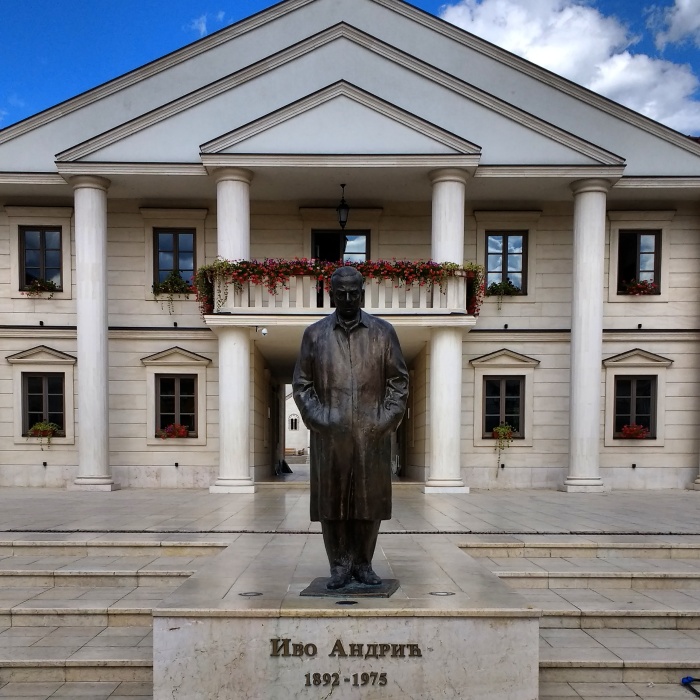
Statue of the writer Ivo Andrić whom Andrićgrad is named after

Statue of Petar II Petrović-Njegoš by the Crkva Svetog Cara Lazara orthodox church
Aside from the bridge and Andricgrad, Višegrad is a small but interesting city to explore on foot. If you have the time, walk along the bridge to the other side of the river. From there you can take a walk up one of the hills along a heavily debris laden path. From the top you have an incredible birds eye view over Višegrad.
On the way back down, keep on walking along the other side of the river and very soon you will stumble upon the childhood home of Ivo Andrić. It is a crimson-pink house, but it’s not possible to enter since it is a private residence.

The childhood home of Ivo Andrić in Višegrad
Just before I left Višegrad for Zlatibor, I was at a small cafe close to the bridge where I had an exceedingly good slice of baklava cake. Oh boy it was so good. If I could remember the name of the place I would tell you, but alas I can’t.
By Nicholas Peart
©All Rights Reserved
References
-srbvoz.rs
-panacomp.net
-“The Town That Emir Kusturica Built” : excellent article by Peter Aspden in the Financial Times, where he writes extensively about Andrićgrad and also features an interview with Emir Kusturica
An interesting post, thanks :-o)
LikeLiked by 1 person
Thank you! Glad you enjoyed it 🙂
LikeLiked by 1 person
Wow, it is extraordinary! Sad that I never knew much about the Serbian countryside before.
LikeLiked by 1 person
Thank you April! The Serbian countryside is very beautiful
LikeLike